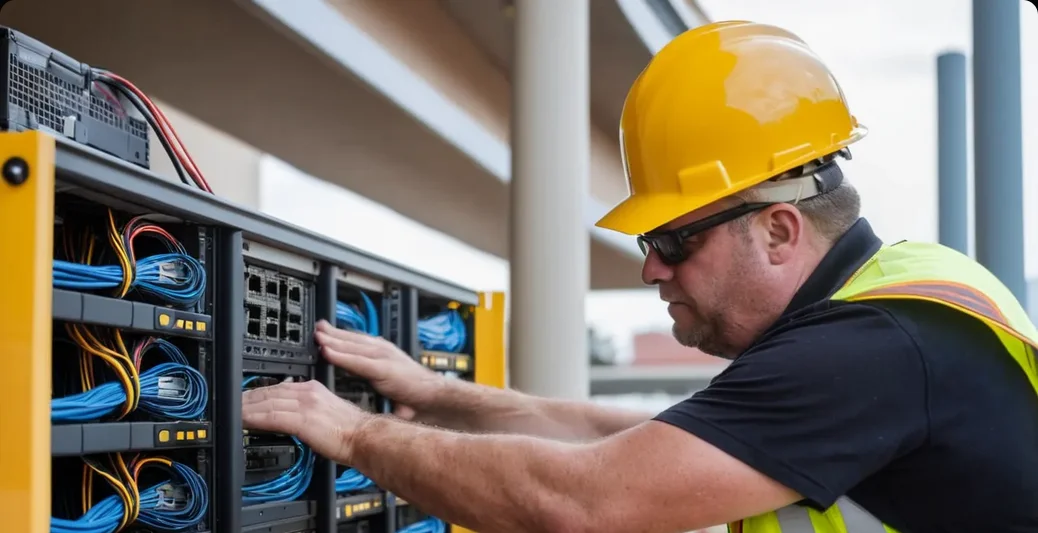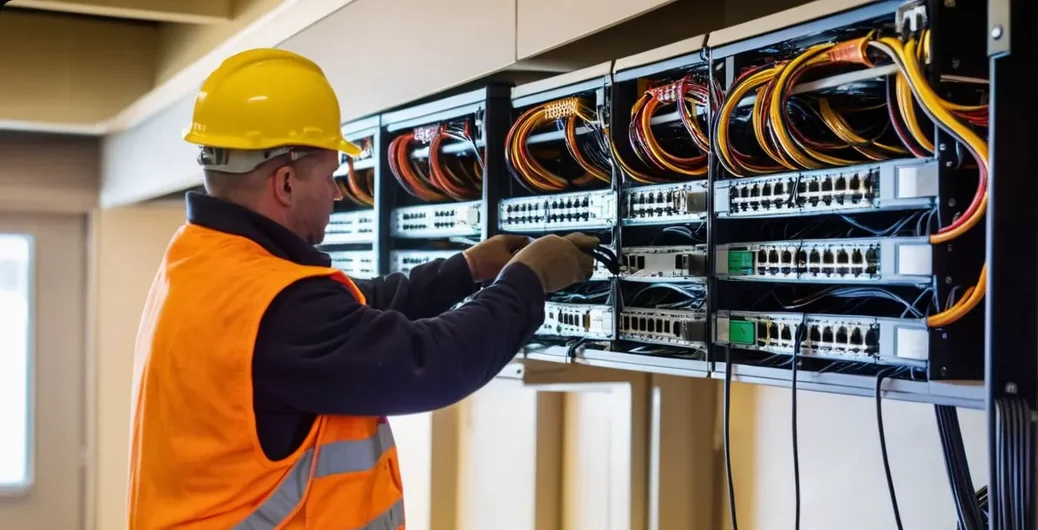Hotels rely on fast, reliable network connections to provide guests with seamless internet access, support business operations, and connect systems like door locks, televisions, and thermostats. Choosing the right cabling infrastructure is crucial for hotels to deliver excellent guest experiences while maximizing efficiency behind the scenes.
Two popular options for hotel cabling are CAT6 and CAT8 Ethernet cables. This article examines the key differences between these standards and provides recommendations for when to use each in a hotel environment.
What is CAT6 Cabling?
CAT6, also known as Category 6, is a network cabling standard designed to support Gigabit Ethernet speeds up to 1Gbps. The CAT6 specification improves on earlier CAT5 and CAT5e standards by using thicker copper wires, added insulation, and tighter twists in the cabling. This enhances protection from interference and crosstalk, allowing CAT6 to transmit data over longer distances without signal degradation.
In most installations, CAT6 can effectively deliver 1Gbps network speeds at distances up to 328 feet (100 meters). It uses the standard 8P8C modular connectors, also known as RJ45 connectors, for simple integration with other networking equipment. CAT6 cable has a bandwidth of 250MHz and is commonly used for connections between switches, routers, servers, and individual devices like computers and printers.
 Benefits of CAT6 for Hotels:
Benefits of CAT6 for Hotels:
Supports gigabit internet speeds needed for bandwidth-heavy uses like video streaming, gaming, and multiple device connectivity
Reliable performance across the typical distances found within hotel buildings
Uses standard connectors for easy installation and integration
Cost-effective solution for delivering fast, stable wired connections
Sufficient for supporting IP phones, guest networks, point of sale systems, and HVAC controls
What is CAT8 Cabling?
CAT8 is the newest category of Ethernet cable that can support even faster network speeds beyond 1Gbps. It can theoretically deliver up to 40Gbps throughput using existing copper infrastructure. CAT8 accomplishes this increased performance through further improvements to the twisted-pair wires – more copper, tighter twists, additional shielding and noise-canceling.
However, this increased speed capacity comes with some tradeoffs. CAT8 cables are larger, stiffer, and more expensive than other categories. More significantly, CAT8 cables can only deliver maximum speeds over much shorter distances than CAT6 – just 16 meters (55 feet) for 40Gbps and only 30 meters (98 feet) for 25Gbps. Performance drops sharply beyond those distances. CAT8 uses slightly different connectors, requiring adapters for use with most existing network hardware.
Benefits of CAT8 for Hotels:
Supports multi-gigabit speeds beyond 1Gbps which may become useful in the future
Ideal for short-distance connections within a server room or network closet
Additional shielding and noise protection improves signal quality
Increased bandwidth capacity for extremely data-intensive uses
More future-proof as higher network speeds are adopted
CAT6 vs CAT8 Recommendations for Hotels
For most hotel networking needs today, CAT6 offers the best balance of fast gigabit speeds, long-distance capability, ease of installation and cost efficiency. Running CAT6 cabling to each guest room, public area and back-office location will comfortably support the bandwidth requirements of modern hotel technology and amenities. It can handle streaming, gaming, WiFi networks, VoIP phones and multiple connected devices simultaneously with performance to spare.
 CAT8 does provide an advantage for high-density connectivity within a server room or network closet. For example, linking servers, storage arrays and switches with CAT8 allows them to fully leverage transfer speeds above 1Gbps over short patch cable runs. However, for long-distance cabling throughout a hotel building, the limited range of CAT8 negates its benefits. Trying to transmit 40Gbps from a CAT8 line that runs 300 feet from a server room to different floors and wings of a hotel is unlikely to work well and is overkill for most applications.
CAT8 does provide an advantage for high-density connectivity within a server room or network closet. For example, linking servers, storage arrays and switches with CAT8 allows them to fully leverage transfer speeds above 1Gbps over short patch cable runs. However, for long-distance cabling throughout a hotel building, the limited range of CAT8 negates its benefits. Trying to transmit 40Gbps from a CAT8 line that runs 300 feet from a server room to different floors and wings of a hotel is unlikely to work well and is overkill for most applications.
The extra costs of purchasing and deploying CAT8 cabling usually does not provide a significant benefit for in-room or public area hotel connections. CAT6 provides more than enough capacity for the everyday needs of guests and staff. Hotel network designers should utilize CAT6 for standard cable runs and reserve any CAT8 for specialized segments connecting servers or networking equipment directly together. This hybrid approach maximizes performance while controlling infrastructure costs.
With technology continually evolving, it is possible that multi-gigabit speeds may become more commonplace in hotels one day. However, CAT6 provides plenty of runway to handle increasing demands for the foreseeable future. For most hoteliers, investing in CAT6 cabling strikes the right balance of performance, future-proofing and cost for supporting excellent wired networking across their properties now and for years to come.

 Benefits of CAT6 for Hotels:
Benefits of CAT6 for Hotels: